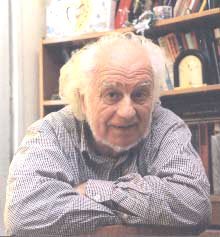 The origin of Suggestopedia
The origin of Suggestopedia
Suggestopedia is a language teaching method developed by the Bulgarian psychologist, Georgi Lozanov (see picture on the right.) Like Community Language Learning and the Silent Way Method, Suggestopedia is an innovative method that promises great effective language learning results. Lozanov claimed that by using this method one can teach languages approximately three to five times as quickly as conventional methods.
The name of Suggestopedia is from the words “suggestion” and “pedagogy.” It is a set of learning recommendations derived from Suggestology, which Lozanov describes as “a science … concerned with systematic study of the nonrational and/or non-conscience influences” that human beings are constantly responding to. The method also draws from insights from yoga and Soviet psychology. From yoga, it draws the importance of relaxation of mind for maximum retention of material. From Soviet psychology, Lozanov took the idea that:
“all sudents can be taught a given subject matter at the same level of skill.” Jack C. Richards and Theodore S. Rodgers (1986)
The main features of suggestopedia are:
- The use of music to relax learners.
- The furniture, decoration, and the arrangement of the classroom.
- Teacher’s authority. The teacher plays a central role and he/she is the source of all information.
In the classroom
The arrangements and the physical atmosphere in the classroom are paramount for making sure that the students feel comfortable and confident. The use of various techniques including art and music are used by trained teachers. In the beginning, the lesson based on Suggestopedia used to consist of three phases: deciphering, concert session (memorization séance), and elaboration. Later, it has developed into four phases as lots of experiments were done: introduction, concert session, elaboration, and production.
- Introduction: The teacher teaches the material in “a playful manner” instead of analyzing the lexis and grammar of the text in a directive manner.
- Concert session (active and passive): in the active session, the teacher reads with special intonation as selected music is played. Occasionally, the students read the text together with the teacher, and listen only to the music as the teacher pauses in particular moments. The passive session is done more calmly.
- Elaboration: The students sing classical songs and play games while the teacher acts more like a consultant.
- Production: The students spontaneously speak and interact in the target language without interruption or correction.
Criticism:
Suggestopedia has been criticised for a number of reasons:
- It is not a practical method as teachers face the problem of the availability of music and comfortable chairs.
- Lozanov refers in a number of occasions to the importance of memorization, excluding any reference to comprehension and creative problem solving. In fact, language is not only about the power of the mind to memorize. It’s about understanding, interacting, and producing novel utterances in different unpredictable situations.
Advantages
In spite of all these disadvantages, some tenets of Suggestopedia have been accepted and adapted by teachers worldwide.
- Through Suggetopedia we learn to trust the power of the mind.
- We also learn that deliberately induced states of relaxation can be valuable at times in the classroom.
- We can also benefit from the use of music to get students to it back and relax.
These are some of the contributions of Suggestopedia that teachers may weigh and adapt to different situations.
References:
H. Douglas Brown (1987). Principles of language learning and teaching. Englewood Cliffs, New Jersey, Prentice Hall
Richards, Jack C. and Theodore S. Rodgers (1986). Approaches and methods in language teaching: A description and analysis. Cambridge: Cambridge University Press
Other sources: Wikipedia – Suggestopedia



